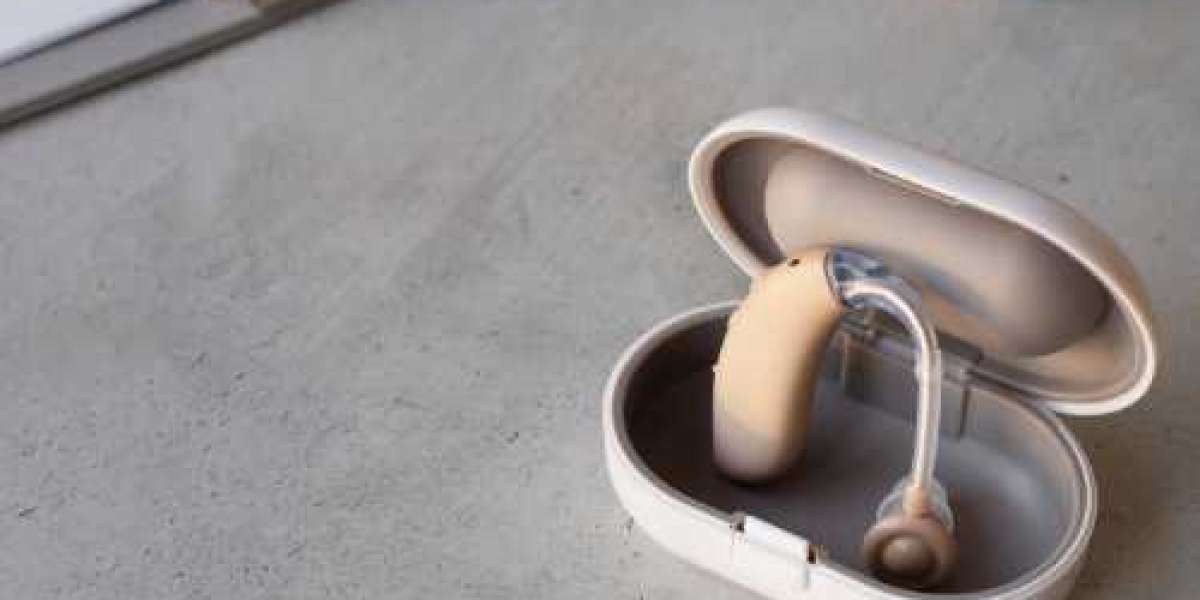Hearing technology has come a long way, hasn’t it? Gone are the days when hearing aids looked like bulky radios hanging behind the ear. Today’s devices are smarter, sleeker, and built for everyday life. Among the most popular choices, RIC Hearing Aids and BTE hearing aids often steal the spotlight but they’re not quite the same thing. So, what’s the actual difference between these two? And more importantly, which one works best for you?
Let’s break it down in plain English no confusing jargon and no boring technical lectures. Just the facts that matter.
RIC Hearing Aids – Discreet Yet Powerful Hearing Support
What makes RIC Hearing Aids unique?
RIC Hearing Aids (Receiver-in-Canal) feature a small hearing device that sits behind the ear, with a thin wire connecting to a tiny speaker placed inside the ear canal. This design keeps things lightweight and subtle almost invisible depending on your hairstyle.
These are perfect for people who want modern features without wearing something that screams “hearing aid.” RIC styles are especially loved because they deliver crisp, natural sound, thanks to their smart microphone and receiver technology working together.
BTE – A Classic Design with Modern Power
Why do people still choose behind-the-ear hearing aids?
BTE hearing aids (Behind-The-Ear) are the traditional heroes of the hearing world. They rest comfortably behind the ear, with a tube that channels sound into a custom earmold or dome inside the ear. These models are incredibly reliable and can handle everything from mild to profound hearing loss.
If durability and amplification are at the top of your wish list, BTE models are tough to beat. They offer strong power, longer battery life, and can even be easier to maintain especially for seniors or people with dexterity issues.
RIC vs BTE – Side-by-Side Comparison
Let’s make this super simple. Here’s how they stack up:
Feature | RIC Style | BTE Style |
Appearance | Very discreet and lightweight | Slightly more visible |
Comfort | Comfortable, minimal ear blockage | Comfortable but depends on earmold fit |
Sound Quality | Clear, natural sound | Powerful amplification |
Hearing Loss Levels | Mild to severe | Mild to profound |
Battery Options | Rechargeable and disposable | Rechargeable and disposable |
Technology Features | Bluetooth, noise filtering, feedback control | Similar features available |
Maintenance | Moderate | Easy to clean and service |
Best For | Style + clarity | Strong amplification + reliability |
Which One Should You Choose?
Still torn between the two? Let’s narrow it down.
Choose RIC if:
- You want a modern look that doesn’t draw attention
- You prefer natural, clear sound quality
- Comfort matters more than power
- You enjoy Bluetooth streaming and smart features
- You have mild to severe hearing loss
Choose BTE if:
- You need strong amplification because of significant hearing loss
- You want long-term durability
- You have trouble handling small devices
- You don’t mind the device being slightly more visible
- You want something easy to maintain
Benefits of Both Styles
No matter which one you choose, both offer:
- Custom fitting
- Feedback cancellation
- Noise reduction
- Directional microphones
- Wireless connectivity (on newer models)
- Rechargeable battery options
- Tinnitus relief programs
So really, it’s less about which one is “better” and more about which one fits your lifestyle.
RIC vs BTE – Real-Life Examples
- Office Professionals: Prefer RIC for discreetness during meetings.
- Elderly Users: Often prefer BTE as it’s easier to handle.
- Students and Teens: Lean toward RIC for sleek design.
- Rural Areas: BTE works better due to low maintenance needs.
- Musicians: RIC offers more natural sound for music and conversation.
Conclusion
At the end of the day, choosing between these two isn’t about picking a winner it’s about finding the hearing solution that fits your world. RIC Hearing Aids are perfect for people who want a modern, stylish, and high-performing option. BTE hearing aids, on the other hand, offer reliability, power, and simplicity especially for people with more significant hearing needs.
Your ears, your comfort, your choice. The smartest move? Get a professional hearing test and try both styles before making a decision. Hearing better isn’t just about sound it’s about quality of life.








